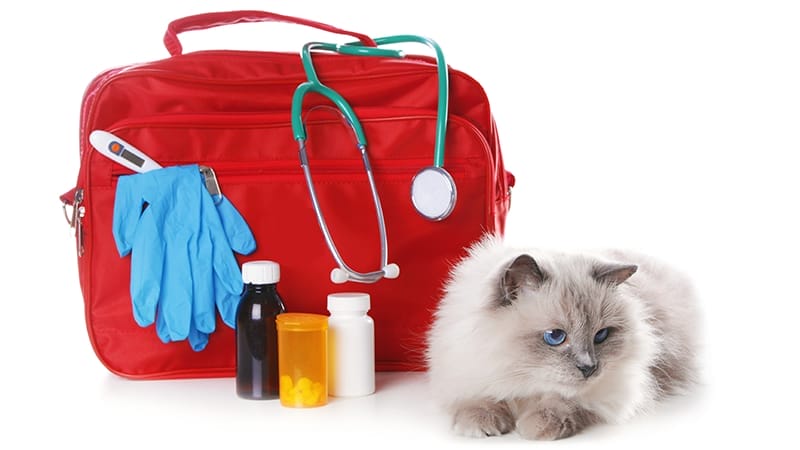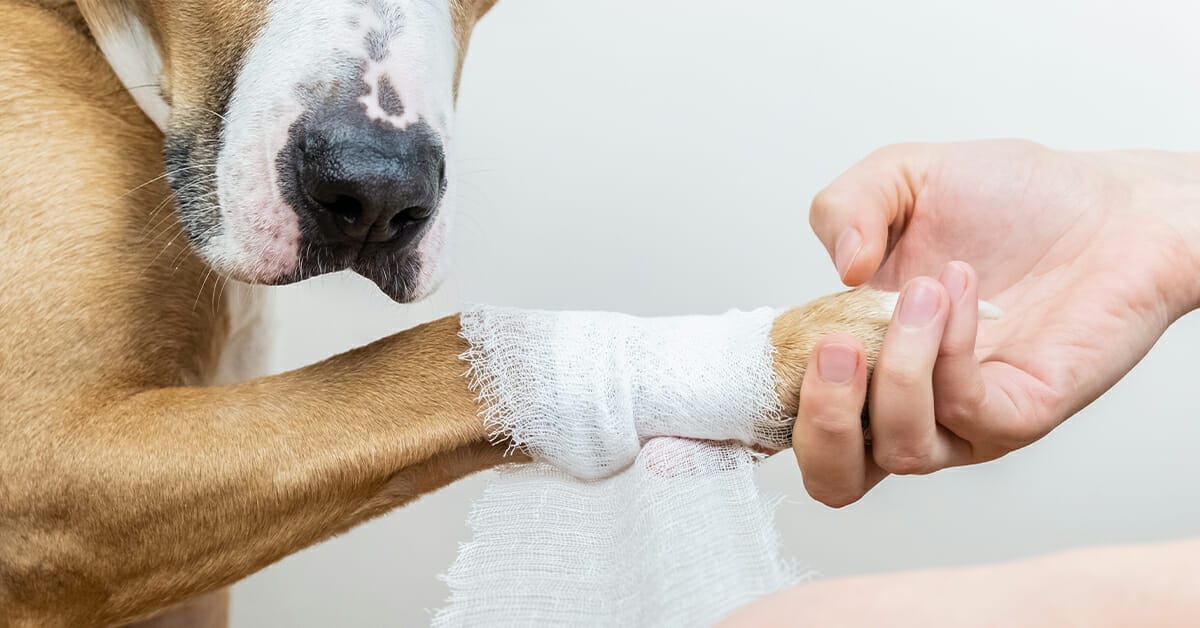
Disaster Preparation for Pets: Key Steps to Keep Them Safe
When developing your family’s disaster preparation plan, keep these key steps in mind to ensure your pet’s safety.
Disasters can strike at any moment, including storms, wildfires, floods, earthquakes, and hurricanes, requiring quick action to keep your family safe. When creating a family safety plan, remember to include your pets and address their unique needs to ensure their wellbeing during emergencies. Our MedVet Doctors share key steps you should consider for keeping your pet safe during a disaster emergency.
Planning an Evacuation with Your Pet
Think ahead about where you would go if you needed to leave your home quickly. Consider family or friends who can accommodate your pet, or research pet-friendly hotels and accommodations in nearby cities.
Many emergency shelters do not allow pets, so it’s important to have alternative plans. Also, check whether your local emergency management office offers pet-friendly sheltering options. Proactively make a list of:
- Pet-friendly hotels (check their pet policies, including any size or breed restrictions proof of vaccination requirements, and pet fees)
- Local veterinarians
- Emergency veterinary hospitals like MedVet
- Animal control agencies in the areas you might evacuate to
To prepare your pet for a disaster, consider crate training to provide a safe space during emergencies. In preparation, keep your pet’s crate or carrier easily accessible. Label it clearly with your contact information in case of separation.

Importance of Pet Identification
In an emergency, pets can become separated from their owners. To increase the chances of being reunited, ensure your pet has:
- An up-to-date identification tag on their collar with their name, your name, and a current phone number. If your pet has a chronic health condition, consider including that information.
- A microchip with current contact information in the database. Most veterinary clinics and shelters can scan lost pets for a chip.
- A recent photo of your pet to help identify them if they get lost. Include one of you with your pet for proof of ownership.
- A sign on your residence alerting first responders to the presence of pets. You can obtain a free pet safety pack that includes alert stickers from the ASPCA.
Learn more about pet identification options in our blog post.
Take Important Documents and Numbers in an Emergency
Have printed copies of your pet’s most recent medical records, including vaccination history, in a waterproof sleeve and save digital backups for easy access. This is especially important if your pet is receiving treatment for a chronic health condition. Additionally, you may be required to show up-to-date vaccinations for emergency boarding at a kennel.
Keep a list of emergency phone numbers, including:
- Your veterinarian
- Nearest 24-hour veterinary emergency clinic
- Pet poison control hotline
- Local animal control
- Animal shelters and rescue organizations in your evacuation area
Pet Emergency Kit Essentials
Prepare an emergency kit with essential items to last 7-10 days:
- Collar and harness
- Crate or pet carrier (label with contact information)
- Leash
- Favorite toy, treat, bedding, and/or blankets for comfort
- Food and water for 7-10 days
- Portable food and water bowls
- Medications
- Pet litter and waste disposal bags if needed
- Copies of important documents (veterinary records, ID, microchip information)
- Flashlight and extra batteries for navigating low-light areas with your pet
- Calming aids, such as prescription medications and compression shirts

Pet First-Aid Supplies
Create a pet first-aid kit with:
- Basic supplies like cotton balls, digital thermometer, tweezers, scissors, antiseptic wipes, and styptic powder (for minor bleeding)
- Bandage-related supplies like adhesive tape and gauze pads
- Medications like diphenhydramine and hydrocortisone cream (consult your veterinarian for proper dosage)
- Additional items like a blanket, leather gloves, and a muzzle (for dogs)
Our blog post on pet emergencies and first aid offers additional information. You can also download an app on pet first aid from the American Red Cross.
Preventing Illness and Injury After a Disaster
After a disaster, be aware of potential disease risks, such as contaminated water and wildlife. Follow the Centers for Disease Control (CDC) guidelines for safe interaction with your pet, including:
- Avoiding contact with potentially contaminated water or food
- Keeping your pet away from wildlife and other animals that may be carrying diseases
- Practicing good hygiene when handling your pet or their food and water
Additionally, be aware of your surroundings and take precautions to prevent injuries. Be cautious of downed power lines, sharp debris, and other hazards that could harm your pet. When taking your pet outside, keep them on a leash to prevent them from encountering these dangers. Use reflective gear if visibility is poor.
By taking these precautions, you can minimize risks to your pet’s health and safety during and after a disaster. Remember: if it’s not safe for you, it’s not safe for your pet. You can learn more about disaster preparation at ready.gov.
Visit our Pet Care Resources library for more pet health and safety information.
FAQs
What do I need to evacuate with my pet?
What is the best way to find my lost pet?
What documents should I have for my pet in case of an emergency?
What emergency supplies should I have for my pet?
Learn More
For ways to ensure your pet lives a happier, healthier life, visit our Pet Care Resources library.
Pet Care ResourcesContents
Learn More
For ways to ensure your pet lives a happier, healthier life, visit our Pet Care Resources library.
Pet Care Resources

